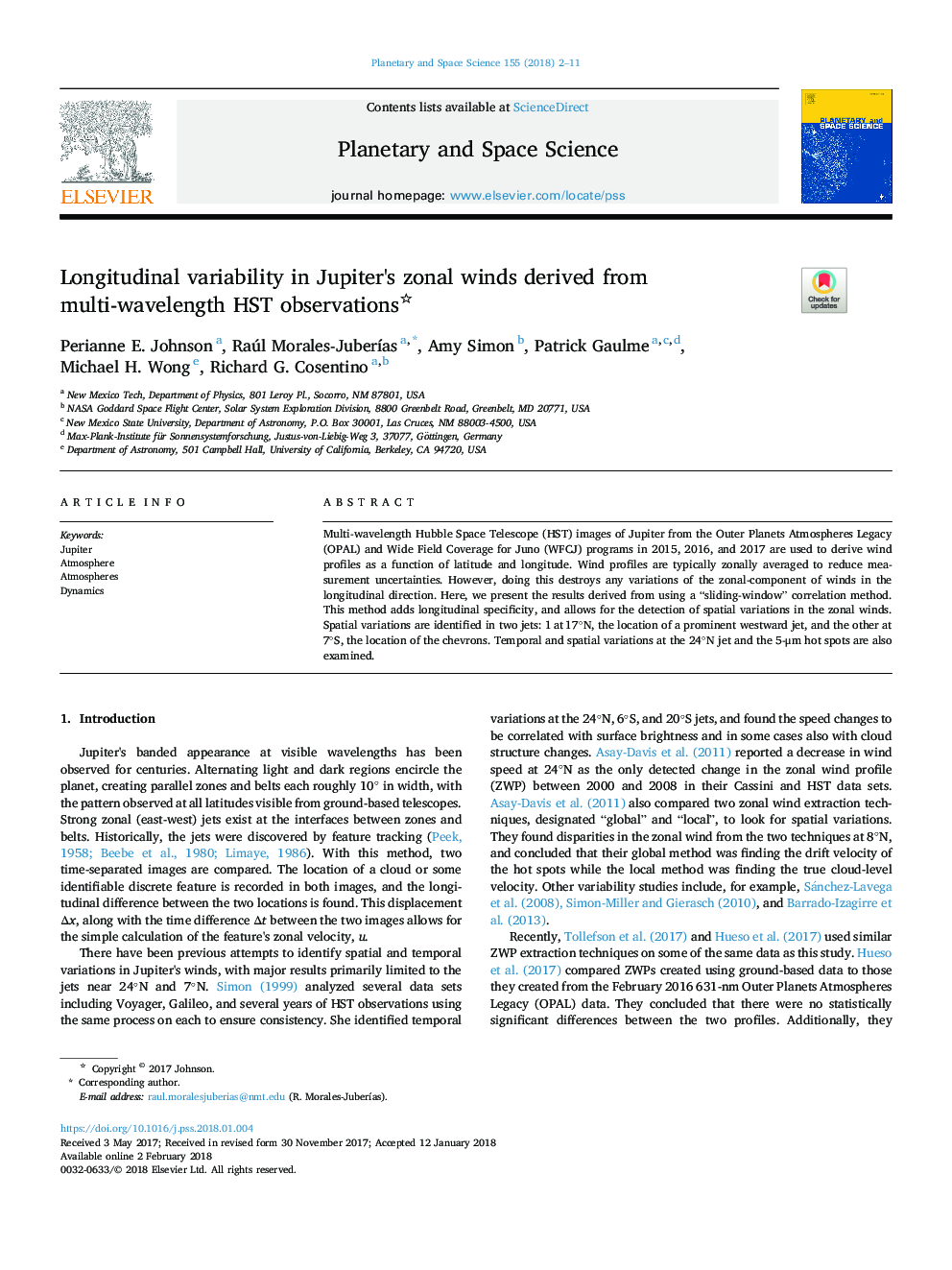| Article ID | Journal | Published Year | Pages | File Type |
|---|---|---|---|---|
| 8142233 | Planetary and Space Science | 2018 | 10 Pages |
Abstract
Multi-wavelength Hubble Space Telescope (HST) images of Jupiter from the Outer Planets Atmospheres Legacy (OPAL) and Wide Field Coverage for Juno (WFCJ) programs in 2015, 2016, and 2017 are used to derive wind profiles as a function of latitude and longitude. Wind profiles are typically zonally averaged to reduce measurement uncertainties. However, doing this destroys any variations of the zonal-component of winds in the longitudinal direction. Here, we present the results derived from using a “sliding-window” correlation method. This method adds longitudinal specificity, and allows for the detection of spatial variations in the zonal winds. Spatial variations are identified in two jets: 1â¯atâ¯17°N, the location of a prominent westward jet, and the other at 7°S, the location of the chevrons. Temporal and spatial variations at the 24°N jet and the 5-μm hot spots are also examined.
Keywords
Related Topics
Physical Sciences and Engineering
Earth and Planetary Sciences
Geophysics
Authors
Perianne E. Johnson, Raúl Morales-JuberÃas, Amy Simon, Patrick Gaulme, Michael H. Wong, Richard G. Cosentino,
